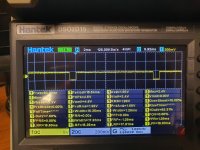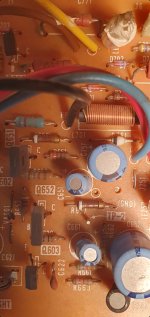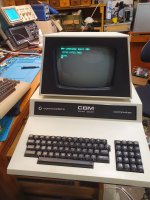daver2
10k Member
We are not looking at the pulse itself, but the time between two pulses.
Can you adjust the timebase to get two (2) pulses on the screen, then measure the time that the signal is LOW and the time between the two pulses (when the signal is HIGH).
Just make sure the voltage swing (top to bottom of the signal) is around 5V.
Dave
Can you adjust the timebase to get two (2) pulses on the screen, then measure the time that the signal is LOW and the time between the two pulses (when the signal is HIGH).
Just make sure the voltage swing (top to bottom of the signal) is around 5V.
Dave



